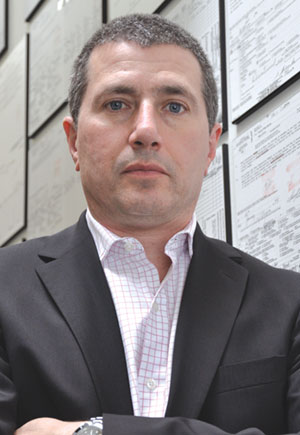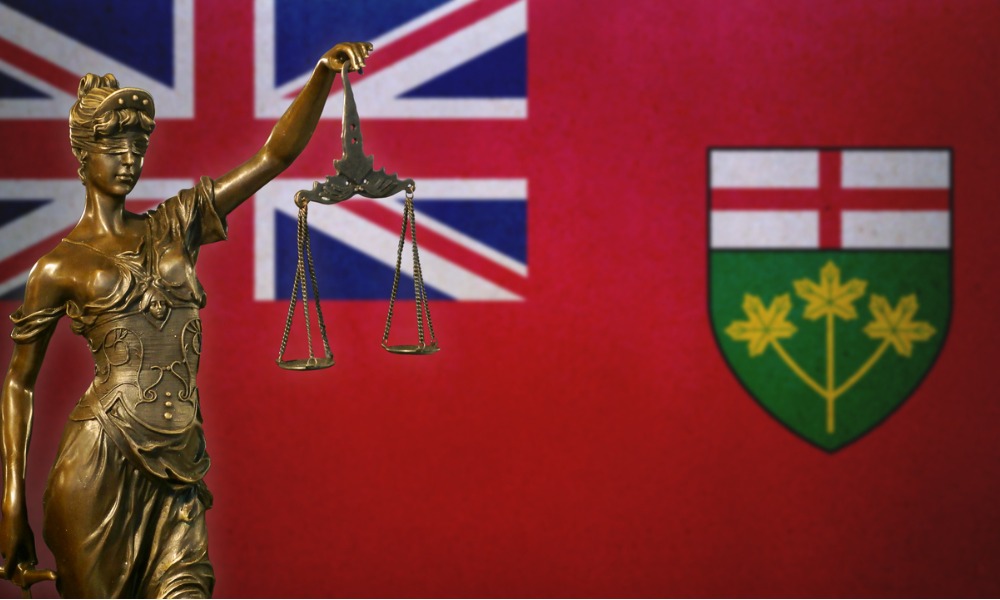There’s a good chance that an Ontario Court of Appeal ruling deeming automatic DNA collection for certain youth criminals to be constitutional will go all the way to the Supreme Court of Canada.
 The appeal court released its decision in April in the cases of three convicted youths, K.M., J.B., and D.R. It followed arguments last November in a constitutional challenge of the mandatory collection of DNA from youth convicted of certain crimes such as robbery and assault causing bodily harm.
The appeal court released its decision in April in the cases of three convicted youths, K.M., J.B., and D.R. It followed arguments last November in a constitutional challenge of the mandatory collection of DNA from youth convicted of certain crimes such as robbery and assault causing bodily harm.
The court ruled the practice is constitutional and thereby overthrew a decision by Justice Marion Cohen of the Ontario Court of Justice in 2009 in which she, after lengthy court proceedings, eventually ruled it infringes the privacy and security rights of youth. Cohen refused to make DNA collection orders in respect to the convicted youth.
Cohen “said it was unconstitutional when it comes to young persons because young persons have certain statutory rights and enhanced privacy rights different from adults,” says David Rose, who represented the Canadian Civil Liberties Association in the appeal.
“What happens now if you are a young person found guilty of assault causing bodily harm or robbery and, for example, you were given a discharge, there would be no discretion on the judge to deny DNA data-banking.”
Rose notes a 2008 ruling made the practice automatic. Prior to that, the issue was up to the judge. Cohen’s decision threw a stick in the spokes. But the appeal court pulled the stick out through its majority ruling.
Monte MacGregor, who represented K.M., says he’s currently waiting to hear from Legal Aid Ontario on whether it’ll fund an appeal to the Supreme Court to stay the DNA order.
MacGregor hopes to know within the month and expects the top court to hear the case. If it does, he expects people from every province to be involved as he’s been getting calls from across the country.
“It’s becoming a national issue,” says MacGregor, adding there are several similar cases.
The CCLA confirms that, as an intervener, it won’t be seeking leave to appeal the decision.
“We will, however, continue to take an interest in the case should one of the parties seek leave to appeal to the Supreme Court of Canada,” said Graeme Norton, who also represented the CCLA.
Norton was unable to comment further on the case. But in a press release, the CCLA said the Court of Appeal found that the manner in which DNA samples are used reduces the privacy interests associated with their collection and retention.
The court also held that because the youth in question had been convicted of criminal offences, further judicial authorization wasn’t necessary in order to take the DNA.
“These considerations were central to the court’s ruling that mandatory DNA orders for youth, as required by the Criminal Code, are not unconstitutional,” said the CCLA.
The CCLA had argued that the DNA provisions of the Criminal Code need to be seen in a different light than those related to adults because of the unique situation and vulnerability of young offenders. It also argued the courts should have some discretion and not have their hands forced.
“This is the only way that both the state’s interest in the collection of DNA and the young offender’s privacy interests can be appropriately balanced on a case-by-case basis,” said the CCLA.
The ruling got the attention of Law Times columnist Alan Shanoff who, writing for Sun Media in April, said the Court of Appeal made the right decision.
The appeal court “got it right,” he wrote. “Justice Cohen got it wrong, but it’s the way she got it wrong that forms the basis of my criticism.”
According to Shanoff, Cohen goaded lawyers to challenge the mandatory rule when, as the appeal court noted, she said she “would be interested in whether [the mandatory collection of DNA for certain offences] raises a constitutional issue.”
Cohen then invited various organizations to get involved and granted intervener status to two of them. The Court of Appeal noted she also took steps to help lawyers obtain legal aid.
Rose believes the Court of Appeal erred in its decision because society treats youth differently than adults in the courts.
In an interview, Rose references two different Supreme Court of Canada cases: R. v. R.C. in 2005 and R. v. Rodgers in 2006.
“In R.C., the Supreme Court said youth have an enhanced privacy interest when it comes to DNA data-banking different from adults.
But six months later, the Supreme Court of Canada came down with a decision [involving Dennis Rodgers] . . . that said DNA data-banking is no different in many respects than digital fingerprints,” says Rose.
“The argument is there should be some ability to have a judge deny seizure of a bodily sample. The legislation doesn’t allow that. The Ontario Court of Appeal disagreed, and they found it wasn’t necessary and didn’t offend Charter principles.”
As a result, some lawyers believe the top court needs to hear the case and put the issue to rest.
 The appeal court released its decision in April in the cases of three convicted youths, K.M., J.B., and D.R. It followed arguments last November in a constitutional challenge of the mandatory collection of DNA from youth convicted of certain crimes such as robbery and assault causing bodily harm.
The appeal court released its decision in April in the cases of three convicted youths, K.M., J.B., and D.R. It followed arguments last November in a constitutional challenge of the mandatory collection of DNA from youth convicted of certain crimes such as robbery and assault causing bodily harm.The court ruled the practice is constitutional and thereby overthrew a decision by Justice Marion Cohen of the Ontario Court of Justice in 2009 in which she, after lengthy court proceedings, eventually ruled it infringes the privacy and security rights of youth. Cohen refused to make DNA collection orders in respect to the convicted youth.
Cohen “said it was unconstitutional when it comes to young persons because young persons have certain statutory rights and enhanced privacy rights different from adults,” says David Rose, who represented the Canadian Civil Liberties Association in the appeal.
“What happens now if you are a young person found guilty of assault causing bodily harm or robbery and, for example, you were given a discharge, there would be no discretion on the judge to deny DNA data-banking.”
Rose notes a 2008 ruling made the practice automatic. Prior to that, the issue was up to the judge. Cohen’s decision threw a stick in the spokes. But the appeal court pulled the stick out through its majority ruling.
Monte MacGregor, who represented K.M., says he’s currently waiting to hear from Legal Aid Ontario on whether it’ll fund an appeal to the Supreme Court to stay the DNA order.
MacGregor hopes to know within the month and expects the top court to hear the case. If it does, he expects people from every province to be involved as he’s been getting calls from across the country.
“It’s becoming a national issue,” says MacGregor, adding there are several similar cases.
The CCLA confirms that, as an intervener, it won’t be seeking leave to appeal the decision.
“We will, however, continue to take an interest in the case should one of the parties seek leave to appeal to the Supreme Court of Canada,” said Graeme Norton, who also represented the CCLA.
Norton was unable to comment further on the case. But in a press release, the CCLA said the Court of Appeal found that the manner in which DNA samples are used reduces the privacy interests associated with their collection and retention.
The court also held that because the youth in question had been convicted of criminal offences, further judicial authorization wasn’t necessary in order to take the DNA.
“These considerations were central to the court’s ruling that mandatory DNA orders for youth, as required by the Criminal Code, are not unconstitutional,” said the CCLA.
The CCLA had argued that the DNA provisions of the Criminal Code need to be seen in a different light than those related to adults because of the unique situation and vulnerability of young offenders. It also argued the courts should have some discretion and not have their hands forced.
“This is the only way that both the state’s interest in the collection of DNA and the young offender’s privacy interests can be appropriately balanced on a case-by-case basis,” said the CCLA.
The ruling got the attention of Law Times columnist Alan Shanoff who, writing for Sun Media in April, said the Court of Appeal made the right decision.
The appeal court “got it right,” he wrote. “Justice Cohen got it wrong, but it’s the way she got it wrong that forms the basis of my criticism.”
According to Shanoff, Cohen goaded lawyers to challenge the mandatory rule when, as the appeal court noted, she said she “would be interested in whether [the mandatory collection of DNA for certain offences] raises a constitutional issue.”
Cohen then invited various organizations to get involved and granted intervener status to two of them. The Court of Appeal noted she also took steps to help lawyers obtain legal aid.
Rose believes the Court of Appeal erred in its decision because society treats youth differently than adults in the courts.
In an interview, Rose references two different Supreme Court of Canada cases: R. v. R.C. in 2005 and R. v. Rodgers in 2006.
“In R.C., the Supreme Court said youth have an enhanced privacy interest when it comes to DNA data-banking different from adults.
But six months later, the Supreme Court of Canada came down with a decision [involving Dennis Rodgers] . . . that said DNA data-banking is no different in many respects than digital fingerprints,” says Rose.
“The argument is there should be some ability to have a judge deny seizure of a bodily sample. The legislation doesn’t allow that. The Ontario Court of Appeal disagreed, and they found it wasn’t necessary and didn’t offend Charter principles.”
As a result, some lawyers believe the top court needs to hear the case and put the issue to rest.







